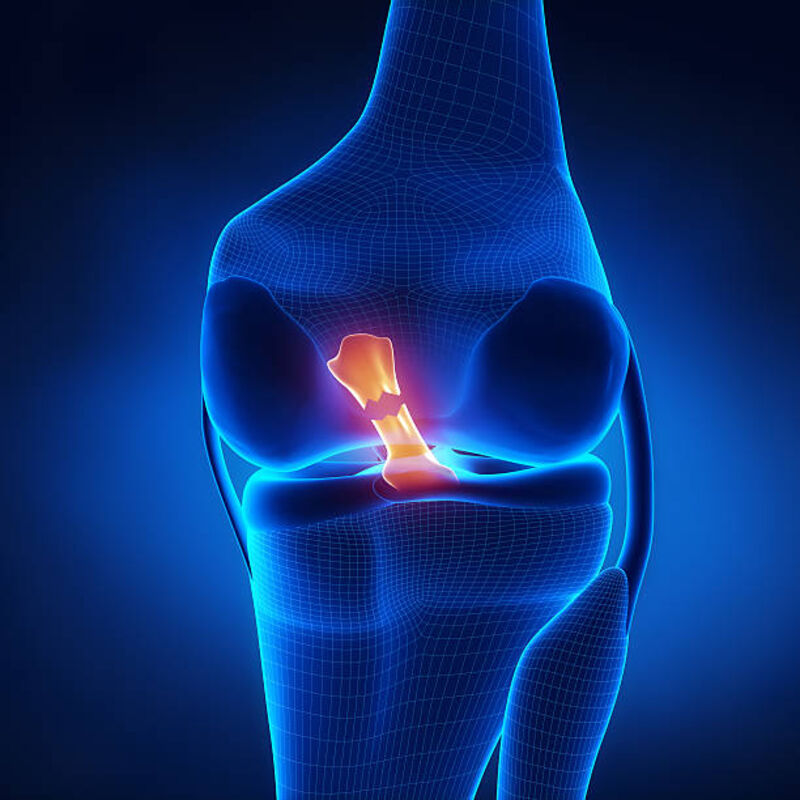
Hello! I am Sarah Lesnar, the Civil Rights Officer for the North Dakota Department of Health and Human Services (HHS), focusing on ADA regulatory compliance and Civil Rights enforcement. The ADA is as wide as it is tall as it is deep, so there are many considerations in play when we say, ‘regulatory compliance.’ To break it down, I focus on ensuring that North Dakota citizens can access HHS services and programs free from physical or electronic barriers.
I recently tore the ACL and meniscus in my right knee while playing league volleyball. What I have learned about these two muscles is that they are very important in knee stabilization and are used when making short or quick turns. The solution to this instability? Surgery, to remake the muscles by using surrounding muscles.
Why do I tell you about my recent injury? Because for the first time in my life, I am experiencing a temporary physical disability which impacts my ability to complete day-to-day activities not only at home but out in society. I knew surgery and the following recovery period was going to be difficult. I do not like sitting still, so having very limited mobility on top of driving restrictions frustrated me. I chose to use this as a challenge to myself to be more observant of not only the challenges I experience temporarily, but how those with permanent disabilities may also be challenged in the same situations.
Prior to surgery I was using a hinge brace which is as long as my leg and tightly cinched. The brace would move with my knee and natural walking movement while providing support. I was able to bend my knee 90 degrees in this brace so walking upstairs was possible but inconvenient as this brace weighs about six pounds. When I was out in public, and when they were available, I would use the elevators or escalators to save energy. I found these by looking for the universal accessibility signs and reading posted direction signs. I noticed that ramps were typically placed near the stairs, and that more people seemed to choose the ramps instead of the stairs. Not too inconvenient, but sometimes the ramps, elevators, and escalators were not near the area I entered the building, or near the area I was trying to reach.
After surgery, I used two crutches and my brace to move around. Automatic doors were very helpful when they worked. One door did not open automatically when I pressed the opener, and I did inform the front desk. But it made me wonder, if I was mildly annoyed because of this inconvenience, what happens when someone is unable to open the door? This further made me believe in, “see something, say something."
Another observation, I noticed people seemed to be watching me, especially younger children. Some children were brave enough to ask what happened, to which I would respond that I fought a bear (for some reason, they did not believe this). Having children, or even adults ask about my injury did not bother me, but it made me realize that because my disability was temporary, this ‘extra notice’ was not permanent. And then realizing how, for those with permanent disabilities, this may be unwelcome as a constant experience when out in public. For me it was an opportunity to realize that if I were constantly being noticed, I may limit the time I spent out in society.
As someone who is very independent and prefers to take care of things myself, another change was having people ask if they could help me, with some ‘eagerly’ wanting to help regardless of my needs. This was a great lesson for my children about learning to ask for permission before helping others. Though I did appreciate the offers of help, a part of me felt ‘diminished’. Even though I knew the offers of help were meant to be kind, I was internally telling myself that the offer was also saying I was not capable of completing the task on my own.
I have told you this story to say, be mindful of your surroundings, especially in relationship to accessibility. The ADA Standards are so important to an individual’s ability to participate without barriers. Thinking for a second about your surroundings, what do you think is for design and what is for accessibility? In my space, I see lever door handles, stairs without a ramp (my home office), and covered outlets. While the door handles were more for design, they are extremely functional because I do not have to use a grasping movement to open the door when my hands are full. I only have stairs in my home, but I know many homes have ramps leading to the house or no stairs at all. Having stairs can be a challenge, as I have recently discovered.
Lastly, my children are young enough to still have covers on outlets, which is for safety more than anything. Here is my challenge to you, see things from a new perspective. Like how spring makes everyone a little lighter Seeing function and accessibility in a new way feels like something new – something we can try to incorporate more for the things that happen in life (such as tearing an ACL in your 30s).
Take time to look around your current environment, look at your floor coverings, your doorknobs, or how about your ceiling fans. How would your life be impacted if you found yourself needing to move through the world differently? It is here that we find ‘grace’, allowing for differences of need with both understanding and collaboration.